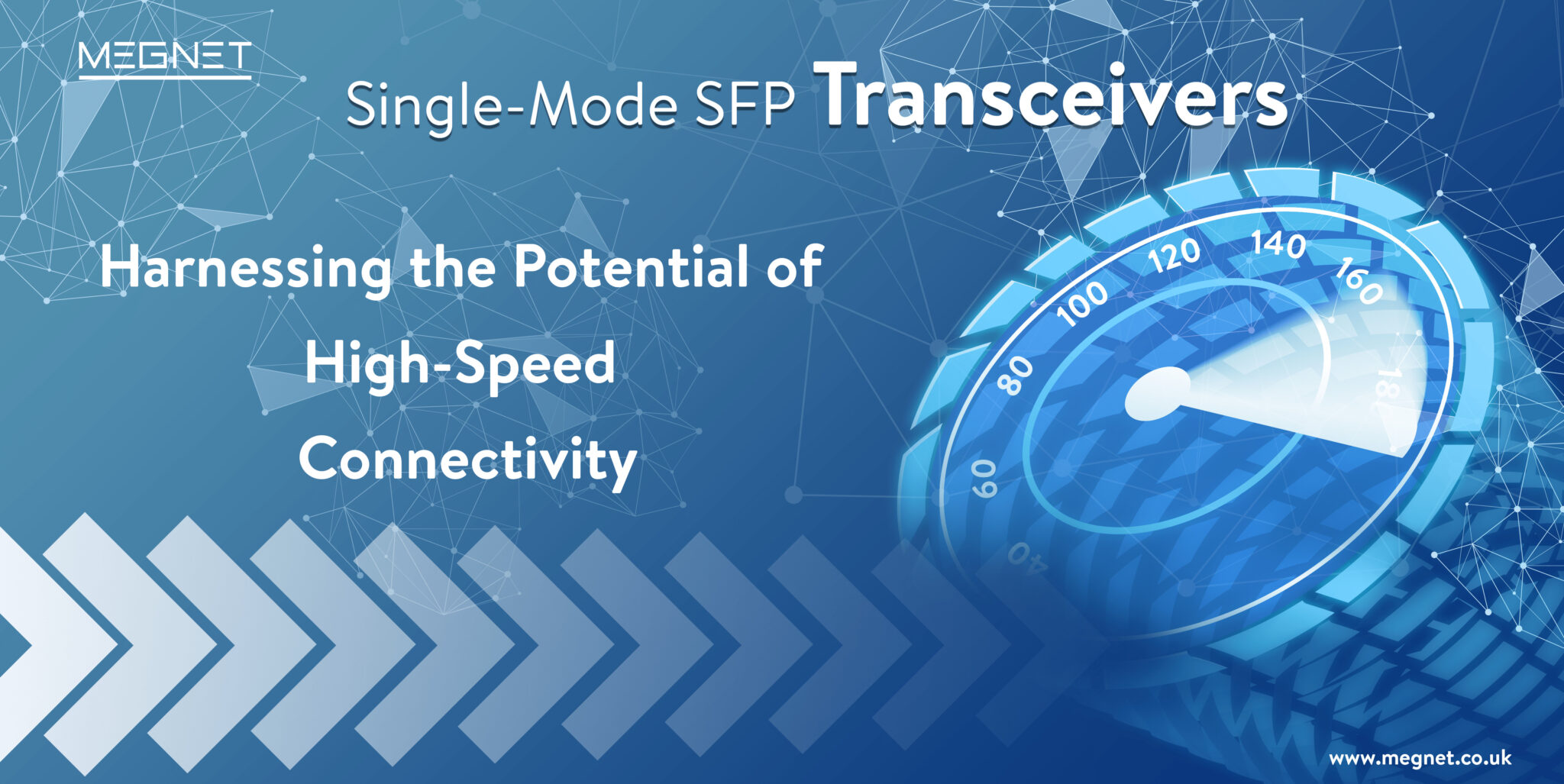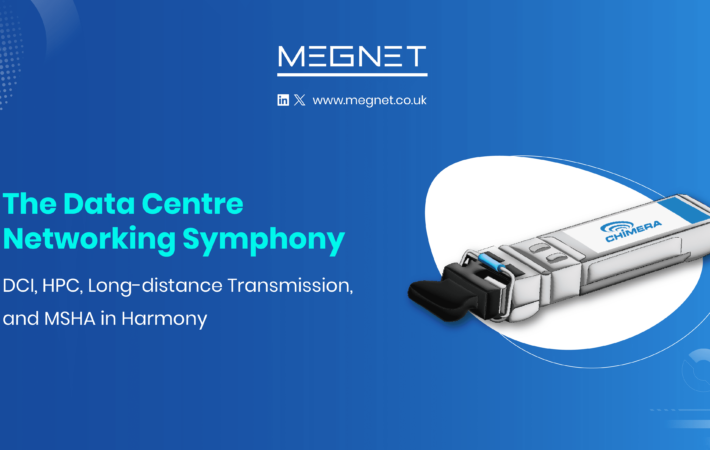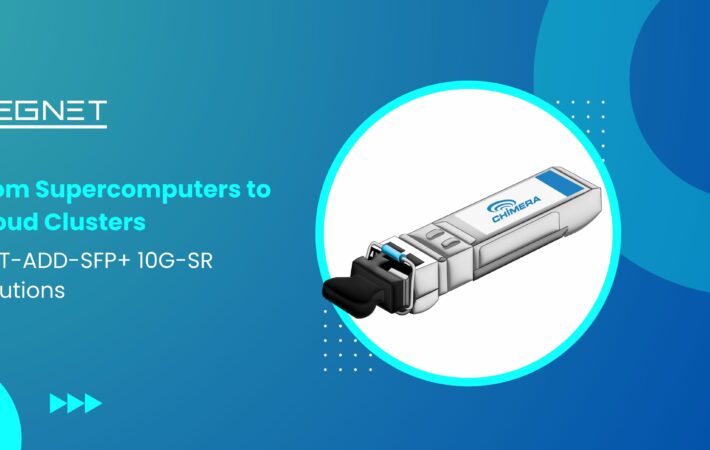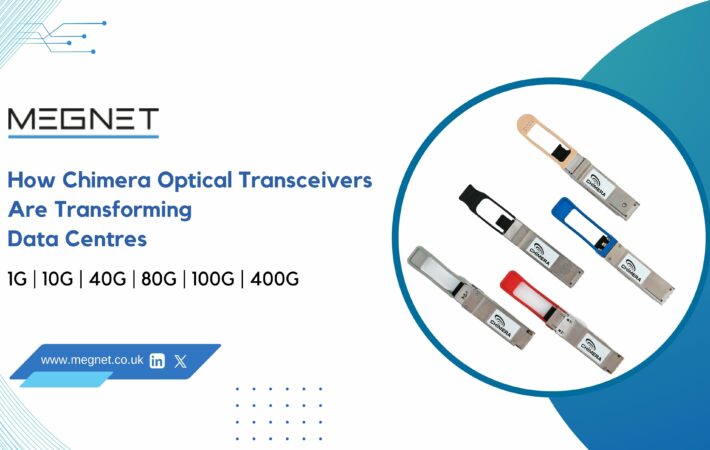
What is single mode SFP?
SFP stands for Small Form-Factor Pluggable. Simply described, it is a small transceiver capable of transmitting and receiving data across fiber. SFPs connect to a network switch or media converter. Because they are hot-pluggable, modules may be readily switched in and out. SFPs are sometimes known as miniGBICs (gigabit interface converters). SFPs have mostly replaced earlier and bigger GBICs at this stage. SFP modules, as the name implies, are small, with just 1-2 fibre optic connectors.

Single mode fiber SFP offers substantially tighter optical tolerances. The laser wavelength is narrower and the core is smaller. This means that SMF can transmit data over considerably greater distances and at higher bandwidths. Single mode SFP Transceivers (SMF SFP) operates primarily in the 1310nm and 1550nm wavelength ranges and is commonly utilized in long-distance transmission environments of 2km, 10km, 40km, 60km, 80km, and 120km. Colored bale clasps and color arrows on labels are typically blue, yellow, or purple. In addition, the compatible fiber optic patch cord is yellow.
Difference Between Single-Mode and Multi-Mode Fibres
There are some key distinctions between single mode and multimode SFP:
SFP Single Mode vs. SFP Multimode: Wavelength of Operation
Single mode SFP modules have a smaller laser wavelength, primarily 1310nm and 1550nm.
Due to the higher core size, multimode SFP modules operate at 850nm wavelength.
Color Coding in Single Mode SFP versus Multimode SFP
Single mode SFP modules‘ color coded bale clasp and color arrow are often blue, yellow, or purple.
The 1310nm module is blue, the 1550nm module is yellow, and the 1490nm module is purple. In addition, the suitable fiber optic patch cord is yellow. The color coded bale clasp and color arrow on the label of multimode SFP modules are black, whereas the employed fiber optic patch cable is often orange.
SFP Single Mode vs. SFP Multimode: Transmitter type
Different types of transmitters are used in single mode SFP and multimode SFP. VCSELs are most commonly seen in multimode SFP transceivers. They are wafer-level testable and do not require a tight packaging. In single mode SFP modules, edge-emitting lasers such as Fabry-Pérot, DFB, and DBR lasers are used for a variety of reaches and applications.
They have complicated layer architectures and frequently necessitate the use of a hermetic packaging in order to obtain increased emission power and reliable single mode operation. As a result, edge-emitting lasers are more expensive than VCSELs.
Cost of Single Mode SFP vs. Multimode SFP
When comparing the costs of single mode SFP with multimode SFP, single mode SFP is more costly. The cost difference between single mode and multimode SFP is mostly due to the various transmitters used. As previously stated, the single mode SFP transmitter is more expensive than the multimode SFP transmitter. As a result, multimode SFP modules are less expensive.
Benefits of Single Mode SFP Transceivers
- A single mode SFP has the USP of longer transmission distance than a multi-mode SFP, which makes it excellent for delivering data over large distances. The single mode SFP transceiver has a reduced core diameter and only one light route, which ultimately decreases signal loss over extended distances.
- They have a single light channel, which helps them provide greater bandwidth and better range. They can send data over distances more than 40 kilometers based on the strength of the transmitter and the quality of the cable.
- Single-mode fibers decrease signal loss due to attenuation due to their smaller core diameter . As a result, single-mode SFP transceivers are compatible for delivering data over greater distances and at higher rates without incurring severe signal deterioration.
- These transceivers provide better signal quality which lowers the Q-factor, a signal quality metric. As a result, the time spent on rectifying transmission mistakes is lesser, and data transfer is more feasible.
- Single-mode SFP transceivers transmit signals with a smaller beam of light, due to which unwanted users cannot intercept the transmission. This increased security is perfect for sending sensitive data such as financial information, medical records, and customer information.
- These transceivers are less prone to signal distortion induced by environmental conditions such temperature variations, electromagnetic interference, and mechanical stress.
- They provide good performance over a wide temperature and climatic range, which makes them a preferable solution for data transfer in both industrial and commercial situations.
- The single mode SFP transceivers are designed for high-speed transmissions, and are useful for streaming high-definition video, downloading huge files, and synchronizing data between devices.
- As they provide a wide range of data speeds, including 10GbE, 40GbE, and 100GbE, it makes them sought after for data transfer across several sectors.
Important points to remember while using either single mode or multi mode SFP
When using either single-mode or multi-mode SFPs, bear the following in mind:
- Ensure that the SFPs at both ends of the fiber patch cable have the same wavelength and color coding.
- Extreme bends in fiber optic cables should be avoided since they increase attenuation of transmitted light.
- If you do not utilize the SFP, the dust plug must be used to protect the optical port.
- Short-wave SFP modules are used with multi-mode fibers (i.e. orange fiber patch cable) to assure data correctness, whereas long-wave SFP modules are used with single-mode fiber (i.e. yellow fiber patch cord).
Transmission distance, fiber TYPE, and pricing are the initial considerations when selecting SFP transceivers, since these criteria aid in the selection of the best SFP transceivers.
FAQ's
An SFP transceiver (Small Form-factor Pluggable) is a hot-pluggable optical or copper module used in networking equipment to facilitate data transfer across optical fibers or copper cables. It enables the connection of switches, routers, and other network equipment to numerous media types in a flexible and modular manner.
SFP transceivers are classified into two types: single-mode SFP transceivers and multi-mode SFP transceivers. Single-Mode SFPs are used for longer distances with single-mode optical fibers, whereas Multi-Mode SFPs are utilized for shorter distances with multi-mode fibers.
Data rates supported by SFP transceivers include 100 Mbps, 1 Gbps (1000 Mbps), 10 Gbps, 25 Gbps, and even greater data rates for newer variants. The data rate is determined by the kind and specification of the SFP transceiver.
Hot swapping is possible with SFP transceivers; this entails inserting and removing the modules from suitable network devices without first shutting them down. With this feature, administrators can easily perform upkeep and updates without disrupting network performance.
Yes, SFP transceivers follow the MSA standard, which guarantees interoperability between devices manufactured by different companies. Assuming the SFP transceiver is MSA-compliant, it should function with a wide range of network gear.
To transmit data over greater distances, single-mode SFP transceivers use single-mode optical fibers, whereas multi-mode SFP transceivers use multi-mode fibers. The smaller core diameter of single-mode SFPs allows for higher data transfer rates and larger transmission lengths with little signal degradation.
Connecting switches, routers, and servers in data centers; creating long-distance connections between far-flung locations; facilitating ISPs' provision of high-speed internet services; connecting telecommunications equipment in long-distance networks; these are just some of the many uses for SFP transceivers.
Yes, it is possible to use SFP transceiversin both Ethernet and Fiber Channel networks.
SFP and SFP+ vary in different ways. One of the major differences is that the standard SFP transceivers may support data rates of up to 10 Gbps, but the SFP+ transceivers can handle data rates of 10 Gbps and higher. Transceivers with the SFP+ form factor are mostly used in high-bandwidth protocols like 10 Gigabit Ethernet.
Both copper and fiber optic cables are supported by SFP ports. The SFP transceiver's data transmission capacity determines whether a copper or fiber optic connection should be used.









Leave a comment
Your email address will not be published. Required fields are marked *